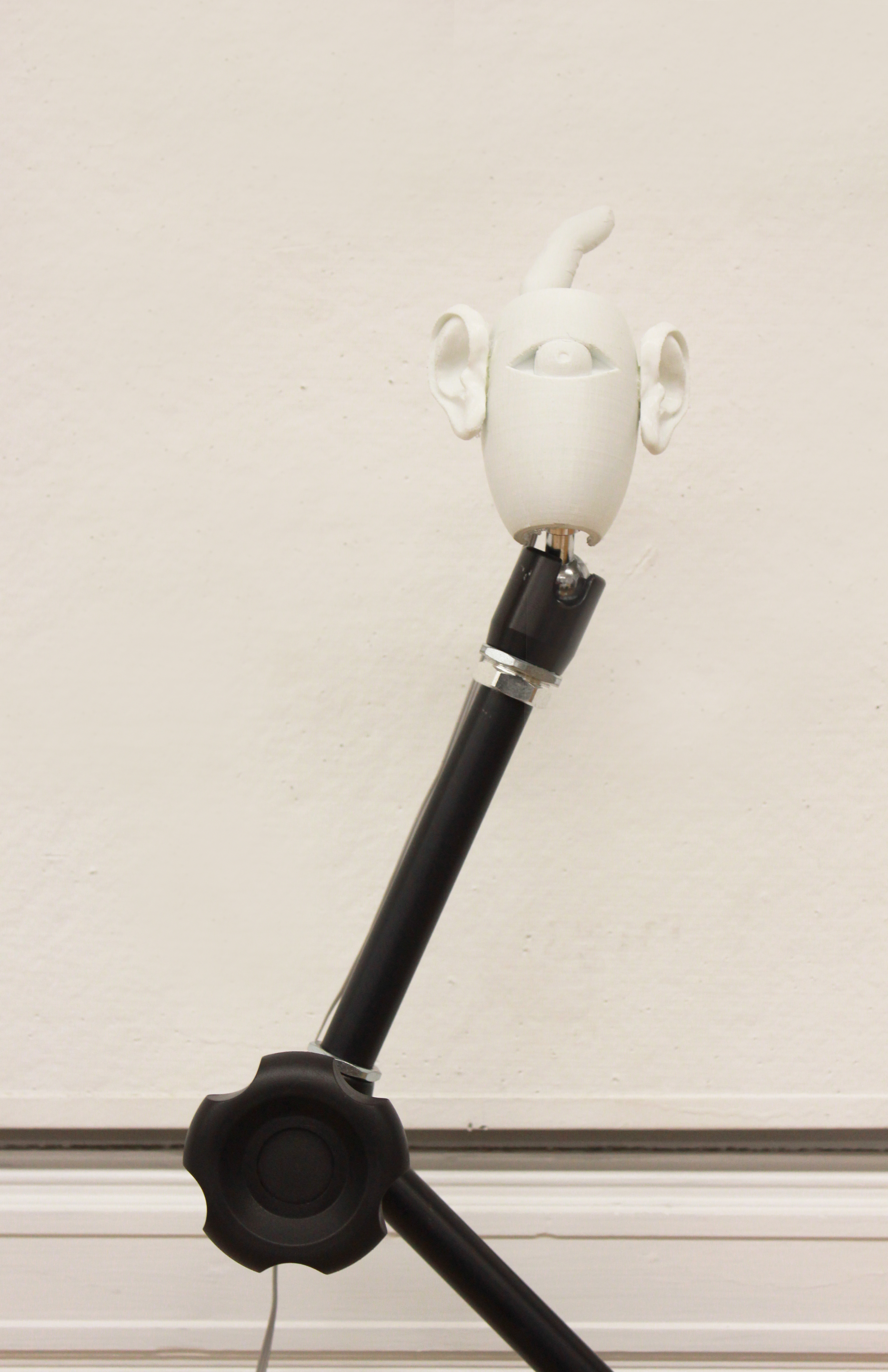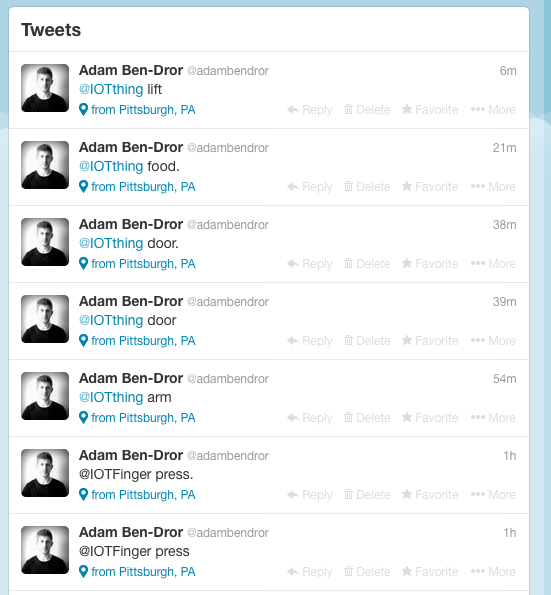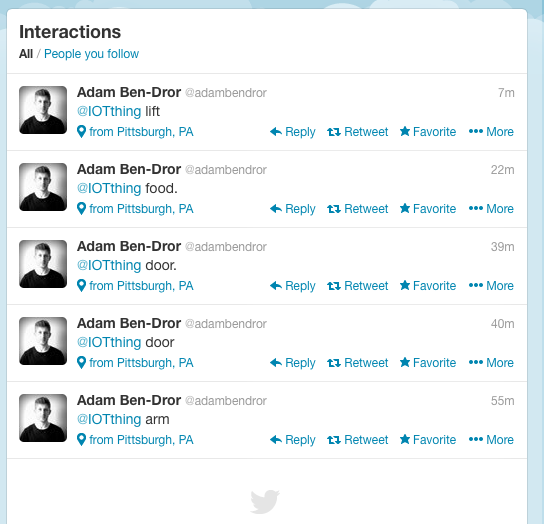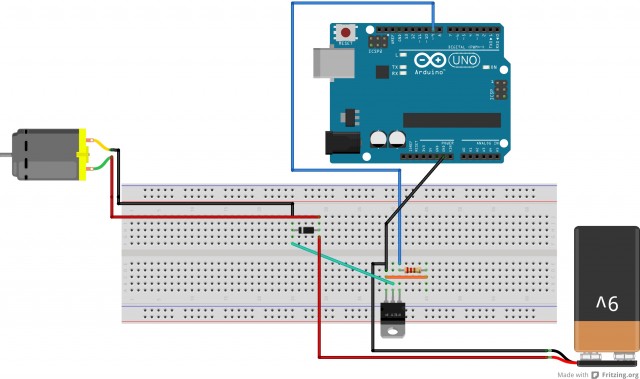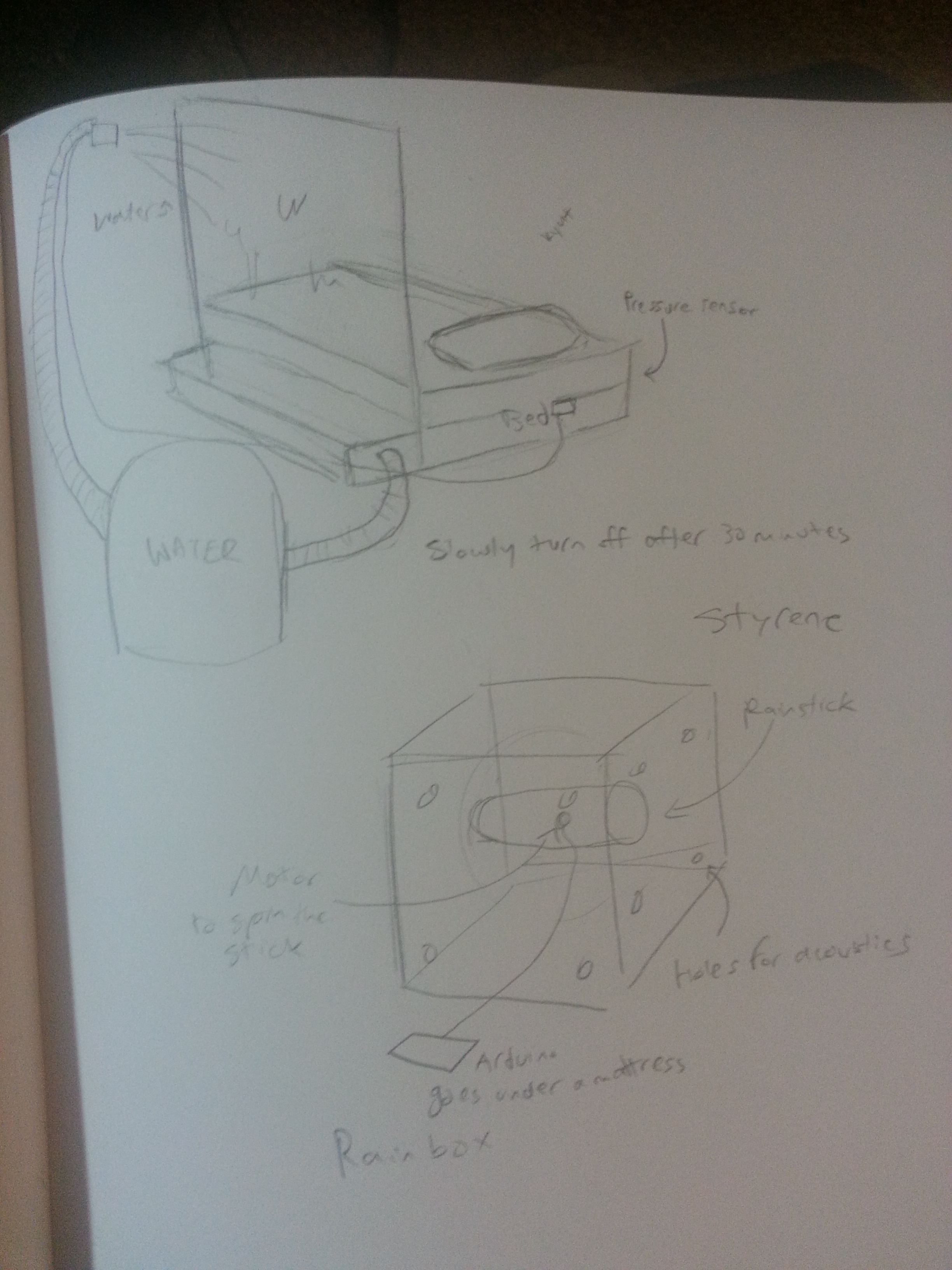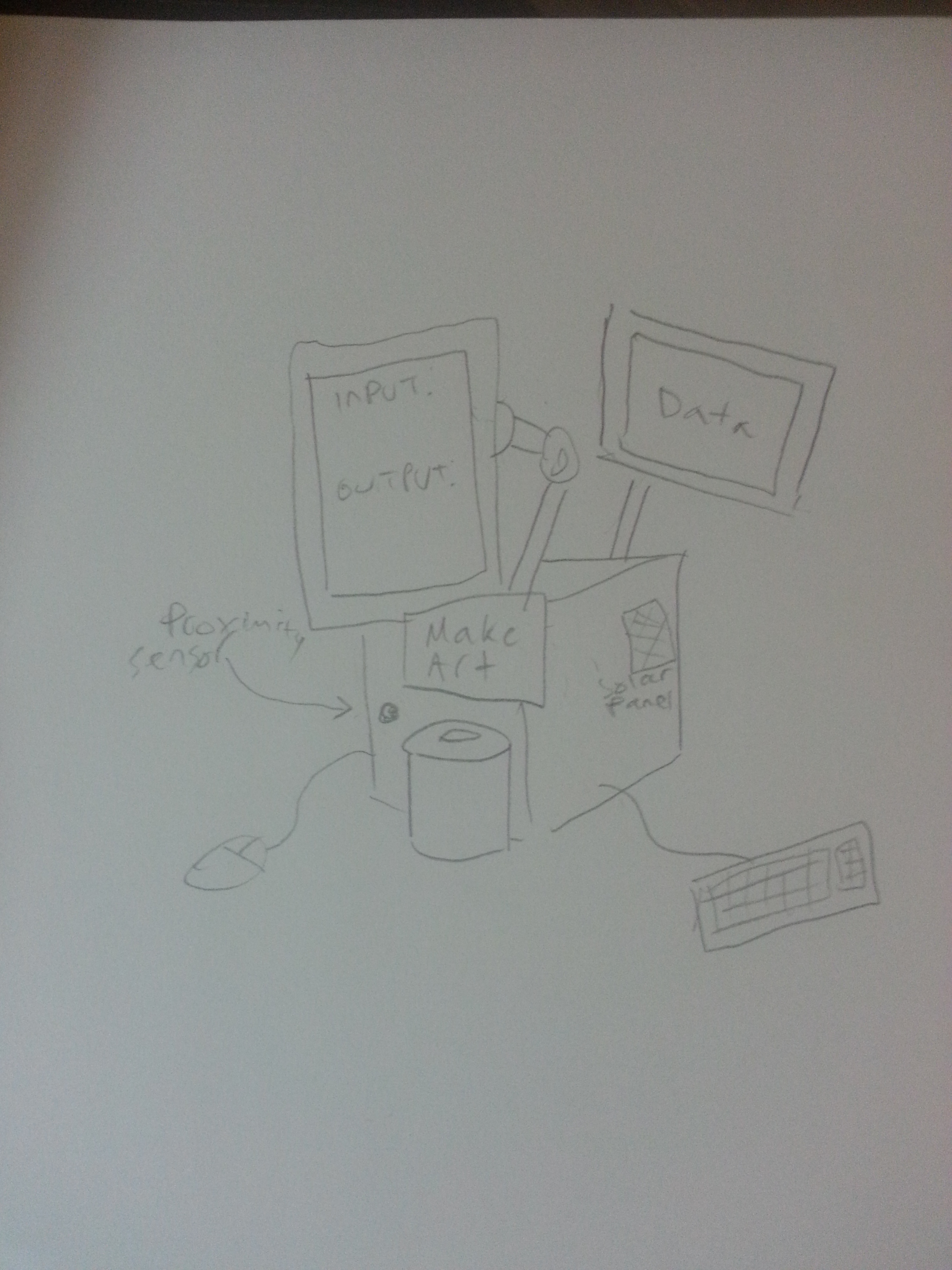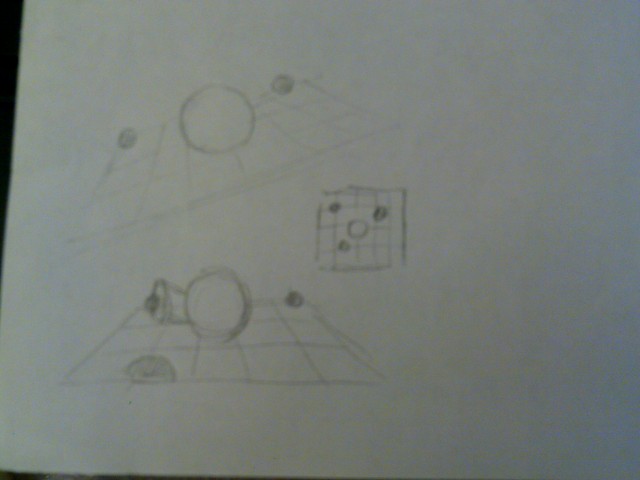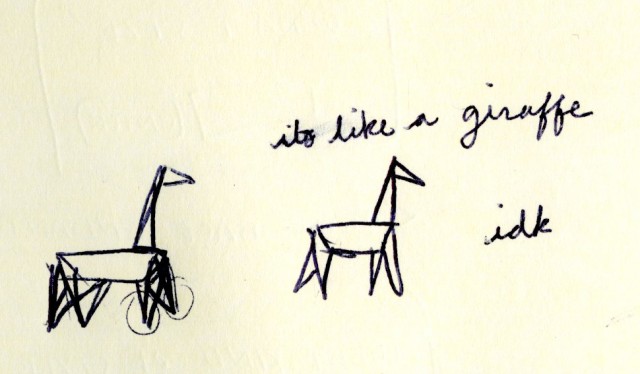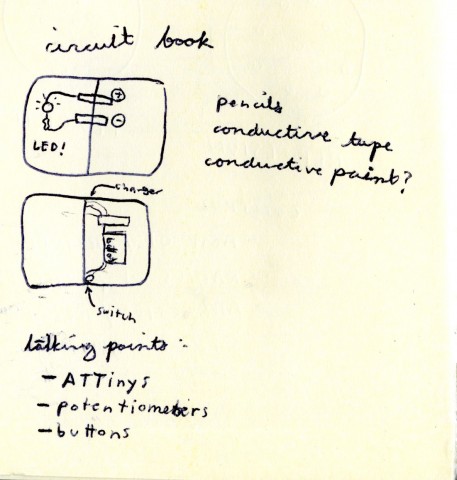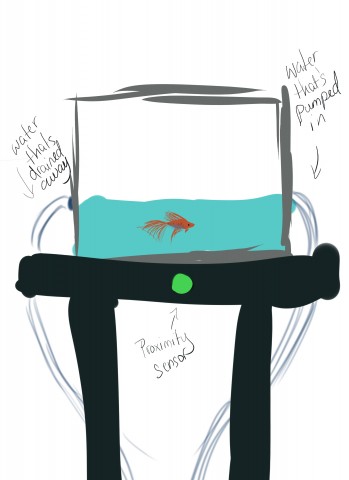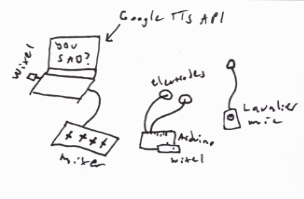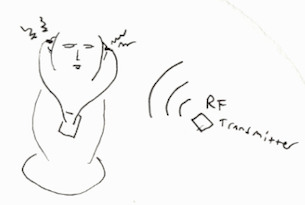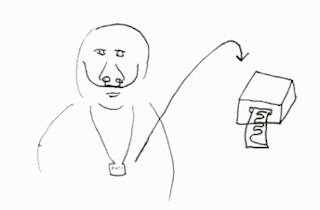IOTthing
Ticha-Progress
Well, I’m technically in “progress limbo” at the moment because I am still waiting for my components from Adafruit, but I’ve done some research on how the code for the project should work and compiled useful code from a couple of sources. I have also modified my idea to something (hopefully) more feasible and (definitely) more interesting than my previous one.
EDIT: Got the voice changer to work and I figured out how to change pitch in realtime without having to worry about too many analog signals! No pictures / video, but it works! Now I just need to make the gloves + do a little bit of coding and I’ll be good to go. 🙂
Hard Part Over – Swetha
I finally got my peristaltic pump from adafruit to work! I’m in the process of adjusting to code so that I can add a stop/start button and a potentiameter to determine the speed of the pump.
Code:
int motorPin1 = 9;
int buttonPin = 2;
int buttonState = 0;
boolean turnMoterOn = true;
void setup() {
pinMode(motorPin1, OUTPUT);
pinMode(buttonPin, INPUT);
Serial.begin(9600);
analogWrite(motorPin1, 0);
}
void loop() {
buttonState = digitalRead(buttonPin);
Serial.println( buttonState);
if(buttonState == LOW){
turnMoterOn = !turnMoterOn;
}
if( turnMoterOn == false){
pinMode(motorPin1, INPUT);
Serial.print("off");
}
delay(3000);
analogWrite(motorPin1, 0);
}
Fritzing:
I used a 9V battery for this diagram, and although the 9V works, a 12V works the best!
Ralph-Assignment-09-Sketches
This is a piece by a kinetic sculptor called Zimoun. What I find enjoyable about this piece is how accessible it is. It has no baggage of social commentary or historical references. Any viewer of any background can jump in and appreciate the piece for what it is: something silly and fun that you can appreciate for just its formal qualities like the cacophonous sounds and simple motions. It feels like new media arts is somewhat saturated with works where the form of the piece serves the content or the technology, so it’s refreshing for me to see this piece where the form is the focus.
[REDACTED]
This is a work by Nils Volker. It is an installation placed on a wall that reacts to the movements of a viewer. It’s interesting how the artist was able to take an object as mundane as plastic bags and create something beautiful and intriguing. The plastic bags have an inherent property of flexibility and transience — that is, they wrinkle easily and don’t keep definite form — so it’s striking how the artist managed to make the bags move in an orderly fashion.
Ideas:
The Rainbox is a compact cube with a sensor that extends under the mattress of one’s sleeping space. When it senses that someone is lying on the bed, the motor in the cube will turn a rain stick within the cube, simulating the sound of rain.
I used to have a bit of a sleeping problem, where I would be lying in bed for hours on end trying to fall asleep, but my fear of the dark, the complete silence, and random thoughts about death would keep me awake to no end. During those times, the gentle sound of rain would relax me and distract my senses enough to allow me to fall asleep. Other times, I would just leave the television on and muted to keep the room dimly lit — the television would make me feel like there are others awake at that time and let me feel not as alone.
I want to create a piece that hearkens back to these times and provide me, and hopefully others, with an immense sense of comfort before sleep. The motor will stop turning after about 30 minutes, and it may even be used as a gentle alarm clock. If possible, I would also like to attach a small LCD screen with a looping video of raindrops on a glass pane to keep the room dimly lit.
The New Media Art is a realization of Jim Campbell’s “Formula for Computer Art”. This abomination will have a wide variety of cheap sensors and data collecting algorithms hooked up to the computer inside the piece as well as various different media of outputs. When the user presses the “Make Art” button, the computer will choose a random method of input and a random form of output and link them together. For example, pressing the button may trigger the proximity sensor, and the data may be transferred to the motor and make the joints in the piece dance. I want this to be an experiment in how meaning might come out of random generation.
Project Proposals
[I apologize for the poor quality of the pictures.]
1st idea: Starry Audio Visualizer
I wanted to make a physical audio visualizer using Arduino and multiple LED lights. The LED lights would be stored inside semi-transparent hand-made stars, which would individually light up according to noise input.
Partially inspired by these:
This is a cube made up of LED lights controlled by arduino. It is an interesting visualizer for 3D motion and objects. It is simple but effective.
This is a music visualizer made using Processing. Its display is also 3D. The white on black background makes the string of dots seem to glow, which reminds me of the night sky.
2nd idea: continuing Kimpi (game)
.. With enemies to kill, and overhead map in corner to show the enemies positions.
I realized a big part of the concept is actually very similar to this game:
http://www.funland.com/cube-runner.html
Differences are that in this game, player is supposed to avoid obstacles, whereas Kimpi should kill enemies as well as avoid them. The movement of this game is also linear, but Kimpi should be able to go in circles, theoretically.
Maddy-Looking Outwards + Sketches
LOOKING OUTWARDS
01. Elektrobiblioteka / Electrolibrary
An electronic book! The video makes the creation process look so INTENSE and DRAMATIC, look at the those arduino code closeups, wow, computers. This was somewhat disappointing in that the book was mainly used as just an HID for the actual program, which was on a computer. I’d love to see a book that is wireless + interactive. (another book spinoff is this circuit sketchbook)
02. Input / Output Paper
More of a tech demonstration than an art piece, input/output paper is a set of two sheets of paper. Fold one and the other mimics its movements. The actuated paper can be made to move, like a tiny paper creature. Adorable! I find memory wire really fascinating and would love to play with that + paper (which is such a flexible medium).
03. Sticker Circuits
This recently launched project on Crowd Supply is a toolkit of stickers that are conductive and can be used as part of electronics projects on non-traditional surfaces like paper, fabric, and even your wall! I know people have been making snap-together electronics kits for a while in a variety of forms, but I think that this more crafts-oriented approach to electronics is more engaging for people who may not be interested in electronics otherwise or find them unapproachable. I like the idea of creating tools with a pedagogical purpose.
IDEAS
01. Origami Robots
I’d like to use muscle wire and small microcontrollers to create self-sustaining origami robots that wander around. I would connect the wire from the bottom of each leg to a point above on the body/head that would create a right angle so I could have each leg “shuffle” forward based on the shrinking/expansion of the wire. I’d like to add simple sensors like a light sensor to enable line following or some sort of other navigation. For microcontrollers I’d use one of the ATtinys for lightweight control, and for power I’d either use a really light battery (think 3V coin cell) or a larger battery that has longer wires (so the creature is tethered but free to move about).
02. Circuit Graffiti Cookbook
A short book that details techniques and schematics for sticker circuits. I’d like to embed a battery in the back cover of the book and actually have demonstrations for things within the book. I could have a internet complement to it which could allow me to upload sketches/schematic files so people could then download them and use them to their own advantage.
bonus. SpaceTime Radio
I’ve been to a couple of artist talks on sound art in the recent past and i’m really fascinated by this genre of soundwalks, where you walk around with a device and it plays sounds based on your GPS location. I think it would be interesting to create a radio (I say radio because I’ve been manufacturing various radio design for a concept studio project, my life is currently fake radios and coding) that only plays when it’s placed in a certain location at a certain time. I’m fascinated with the idea of ritual and cargo cult, esp. in a modern era where there’s often very little understanding of objects we depend on every day (e.g. our cellphones!). The radio would be paired with either vague or nonexistent instructions for spacetime placement, forcing the user to wander and rely on the radio itself for knowledge.
Looking Outwards + Sketches for Final Project – Swetha
https://www.creativeapplications.net/objects/neurotic-armageddon-indicator-nai-proximity-to-armageddon/
This piece dos not actually have to do with my final project, but I found it very interesting that it relates to our previous project. Although it does look menacing, it is meant to be since it is basically a countdown to nuclear warfare. This project although simple carries a lot of weight and perhaps this is a lesson that I can incorporate into my final project?
https://www.creativeapplications.net/processing/petting-zoo-by-minimaforms-intelligent-artificial-creatures-designed-to-learn-and-explore/
This interactive petting zoo inspired my second idea. The thought of using technology as a means to interact in new ways is interesting and although the creature in this project is synthetic it still carries the idea of animal.
https://www.creativeapplications.net/scripts/gowiththeflow-scripts/
I really wanted to work with pumps in this project so “Go With the Flow” was an interesting project to encounter. Water keeps piling up in response to different emails that one gets. It’s simple and is a good way to keep track of your life; i can really see this being in a home as some piece of furnishing or design that is also informative of an individual’s social interactions.
Idea #1:
In india there is a ritual called itu kala samskara that every young girl from a traditional family goes through. This ceremony is similar to england’s coming of age balls for young girls, or jewish ceremonies (like Bat Mitzvah) that commemorate some sort of transition into adulthood. In this case, the Indian ceremony commemorates the first period of a young girl and is also the first time she is allowed to wear the traditional indian Sari. The ceremony is very embarrassing and makes a spectacle out of the first period. Because of this, I want to make a standing sculpture of a sari, which has an has an artificial period. The period will get heavier as the viewer comes closer. The sculpture is meant to be on display for days/hours so that by the end of the exhibition, the gown of the sculpture is drenched with *fake* blood.
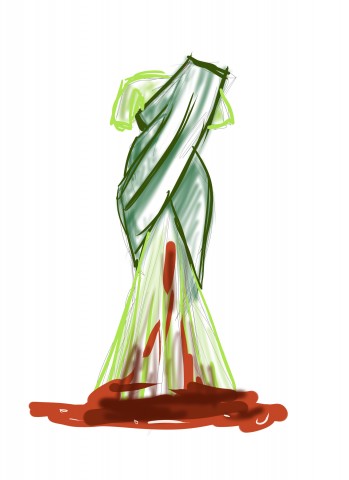
Idea #2:
I want to make a sculpture that is based on interactions between creatures and may comeback to something we all had as a child; a pet goldfish. My idea is to make a fish tank with (hopefully) a live beta fish in it. The water in the tank will be continuously draining out of the tank and the only way water will be added to the tank is is someone is close to the tank (proximity sensor). In this way the fish relies on you for sustenance, which is against the nature of the beta and you, the viewer are similarly chained by the fish. I will of course add a safety feature to the tank to that the water level never goes below a certain threshold. I am, however reserved about this idea partly because of dealing with a live fish and partly because I am not yet sure how the mechanism would go.
Miles: Looking Outwards & Project Ideas
inForm – Tangible Media Group at MIT Media Lab
inFORM – Interacting With a Dynamic Shape Display from Tangible Media Group on Vimeo.
inForm is a Dynamic Shape (shape-shifting) Display by the Tangible Media Group at MIT Media Lab. It is a step towards the group’s vision of “Radical Atoms”, or materials that change their physical form to reflect an underlying digital model. The documentation video is fairly comprehensive. It includes demos in which the display manipulates physical objects, visualizes data and responds to events like phone calls. The inForm reminds me of a pin point impression toy that I used to play with as a child.
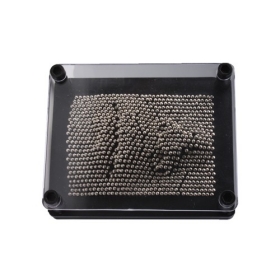
I think this project has enormous potential to make the abstract tangible. One could use it to visualize trigonometric functions, or to represent data collected in an experiment. It also has architectural connotations. If one installs inForm in the floor of a room, the room itself can dynamically shapeshift.
“Face Visualizer”, “Face Instrument” – Daito Manabe
From Daito’s description of the project:
‘I got inspired “we can make fake smile with sending electric stimulation signals from computer to face, but NO ONE can make real smile without humans emotion”. This is words from Mr. Teruoka who is my collaborator to make devices.’
The notion of a “fake smile” is the impetus for my “Say Cheese” proposal below.
It’s interesting to conceive of the face as a means of visualizing emotional data. Daito’s project focuses on the performative aspect of the face, and the uncanny reality that a computer can manipulate a face with surgical precision.
I’m enthralled by the idea that facial expressions can be quantified and deployed on a face. It raises possibilities for cyborg theatre, performance art and retail technology.
Here are two project ideas that I thought of:
Consider a video game in which an alien jellyfish that attaches itself to your character’s face, then proceeds to take control of your real-life face.
Empathy Mirror: First, FaceOSC detects the facial expression of a person standing across from you. It then sends that data to a microcontroller which is attached to a series of electrodes. It contorts your face to the other person’s expression.
MOSS, The Dynamic Robot Constructor – Modular Robotics
The MOSS Kickstarter has, at the time of this writing, raised $252,042 – more than $100,000 over the original goal. It still has 20 days to go.
MOSS is the next iteration of Modular Robotics’ previous product, Cubelets. MOSS is a construction kit for building robots from magnetically connectable cubes and other components. One can combine and program them to make an infinite number of tiny robots – no coding required. Additionally, cubes transmit power and data between each other, so there is no need to individually program or charge them.
It’s clear from the success of the Kickstarter campaign that MOSS has the potential to make robotics more accessible than ever before. However, I’m concerned about the viability of a system in which coding isn’t an option. To what extent does this approach preclude complex designs/behaviors?
In any case, I’m excited to see how MOSS develops.
Project idea 1: Say Cheese
For far too long I have suppressed a burning hatred for cultural situations which require smiling. But I have had to “grin” and bear it: the ability to smile on command is a vital skill in America.
Recent immigrants and tourists might not be familiar with American smiling conventions. They might be shocked to find, for instance, that their neutral expression is interpreted as a sign of distress.
I propose a product called “Say Cheese” with these groups in mind. Say Cheese is a device comprised of a lavalier microphone, two electrodes, a wireless receiver (Pololu Wixel), and an Arduino microcontroller.
Using the Google Text to Speech API, it can pick up on certain key phrases:
• Say cheese
• You okay?
• What’s wrong?
• Are you depressed?
• You should really smile more
• Smile!
Each of these phrases prompts the device to send a current through the two electrodes, which are attached to the user’s face.
 French neurologist Duchenne de Boulogne (1806 – 1875) experimented with electrically induced facial expressions
French neurologist Duchenne de Boulogne (1806 – 1875) experimented with electrically induced facial expressions
Regarding style, I figure that electrodes can’t be much worse than earbuds. And plus, wearing a Say Cheese indicates an earnest desire to assimilate to Our Way.
Variation 1: Clerk Control, a means of enforcing customer relations standards in the retail sector. The phrase “thank you, have a nice day” could trigger a wide, toothy grin.
Variation 2: Empathy Mirror. As described in my looking outwards, the Empathy Mirror matches your expression to that of another person (detected with FaceOSC).
Project idea 2: Turn on, tune in
 Alarm Gates
Alarm Gates
Every time I pass the alarm gates to exit Hunt library, I hear a shrill, high pitched squeal – but only when I’m listening to music on earbuds. I was curious about this phenomenon, so I asked about it on a sound design forum. Here is what someone had to say:
“Basically your earbuds’ cables act as an antenna and pick up the RF signal sent out by the gates to check for tags passing (which when present cause a specific signal to be picked up by the receiver in the gates which in turn triggers the alarm).
To “exploit” this all you need is a radio transmitter and a receiver ;)”
– André Engelhardt, Sound Design on Stack Exchange
I’m fascinated by the prospect of invading someone’s private musical space, even with a modest squeal. I need to research more to find out exactly how this could be implemented, but ideally the radio transmitter would be small and portable. Walking around with it would be like emitting an aural scent to anyone in range (anyone wearing headphones that is).
Backup idea: Breath Graph
 Airflow sensor from Cooking Hacks
Airflow sensor from Cooking Hacks
Controlled breathing is a crucial skill in many activities: meditation and singing to name two. While it is possible to watch breathing in the present, it is difficult to notice gradual trends in breathing. The Breath Graph is a simple device that produces a history of breathing during the course of an activity – a breath graph.
It uses an airflow sensor to measure airflow rate from the nostrils, and a thermal printer to print a breath graph – a line graph with airflow rate on the y axis and time on the x axis – when the session ends.
Assignment 9 Looking Outwards + Sketches
Looking Outwards
Discovery 1: Triple Geek Showcase
The Triple Geek Showcase is a montage of projects by Stefan Goodchild, a “freelance creative coder, motion graphics & interaction designer”. Most of his projects are concert visuals (largely light-based) for clients, made for a musical artist and a venue. Those visuals, especially in montage form, are really dynamic and aesthetically pleasing. Seeing his work made me want to experiment with large scale projections or music visualization.
Discovery 2: Equil Jot Pen
My second discovery is more of a product and less of an art piece, but stay with me. The Equil consists of a receiver and a pen which sends out a signal as a person writes. It allows a person to create on an analog medium—paper—and immediately have it appear and become manipulable onscreen. That blurring of borders between analog and digital input was the part that interests me. It reminds me thematically of a project I’ve referenced before by Bret Victor—a gestural animation app. I like that these projects change how input works to make it simpler to create more expressive digital images or animations.
Discovery 3: Rubix Cube Building
I can’t find the link for this one again as I write this, but I think that the project video I watched was filmed at the building pictured above, the Stuttgart library. The library is modeled after a rubick’s cube and has lights all over the outside. This person’s project was to create a custom, normal-sized rubick’s cube which people could solve, and as they moved the small scale cube, the LEDs on the building would mirror the changes. I liked the whimsy of this project, and how it took an existing light installation and made it interactive.
Discovery 4(ish): Expandos Digital Packaging
This project doesn’t involve circuits or code (at least as a visible output), but I wanted to include it anyways. The items pictured above are ExpanDOs, which are basically cardboard packing chips. The fun thing about them is that they are also Lego-like—once pulled apart, you can use them to build all kinds of structures (see below.) What I like about this product/project is how it takes what would otherwise be trash and makes something of it. Looking at these reminded of me of an idea I’ve had for a while, which is to take scrap cardboard and laser cut it to make larger building block toys (similar to ones I had as a kid.)
Final Project Ideas
Idea 1: Meditation Butterflies
One of my friends at CMU has been working with the university to create a Mindfulness Room, “a room where there is no technology or homework allowed, somewhere to go to relax, be inspired, and breathe.” My idea is to use computer vision (through a webcam, kinect, whatever) to create butterflies in the room which respond to people who enter the environment. Basically, the butterflies flutter around when you walk into the room, but as you sit and meditate longer, the butterflies come and “land” on you/your shadow. To me, the most important part of this concept is just creating a simulated natural environment (fitting the mood of the room) that rewards people for sitting/being still.
Idea 2: Sunrise Blinds
This concept is to link up a motor to the internet and use information about the time of sunrise and sunset in a given place to control the lifting and lowering of a set of blinds. People have done very similar projects before, though they are largely just automatically-controllable blinds. The role that I want my blinds to play is to make people more aware of and in tune with the rising and setting of the sun (as a counter to constant artificial lighting.)
The other motivation I have here is selfish—there are bright outdoor lights outside my window, so I close my blinds to block out as much light as possible at night. However, in the morning, waking up is easier if light gradually brightens (like the sunrise). But since I’m asleep, I can’t open the blinds to let the light in—this project that solves that problem for me.
Idea 3: Whimsical Cheery Creature
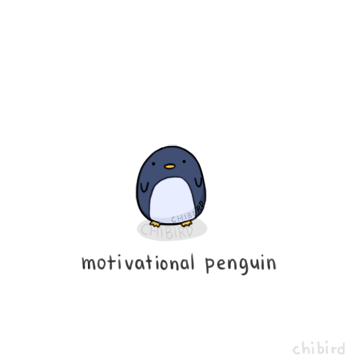
The last project is the most whimsical. It would basically be using code to control a cheery-mechanical figurine, either modeled after the above motivational penguin, or as a little creature which wags its tail in different ways in response to someone’s interactions with it. One of the benefits of this project is that it seems relatively simple, and that it would let me gain technical experience with creating basic robotics (I have none.)

